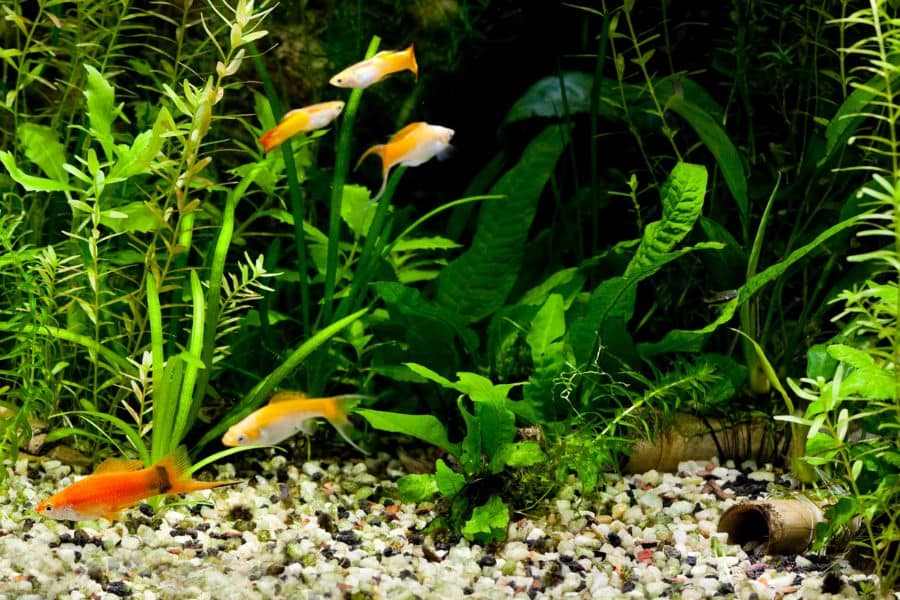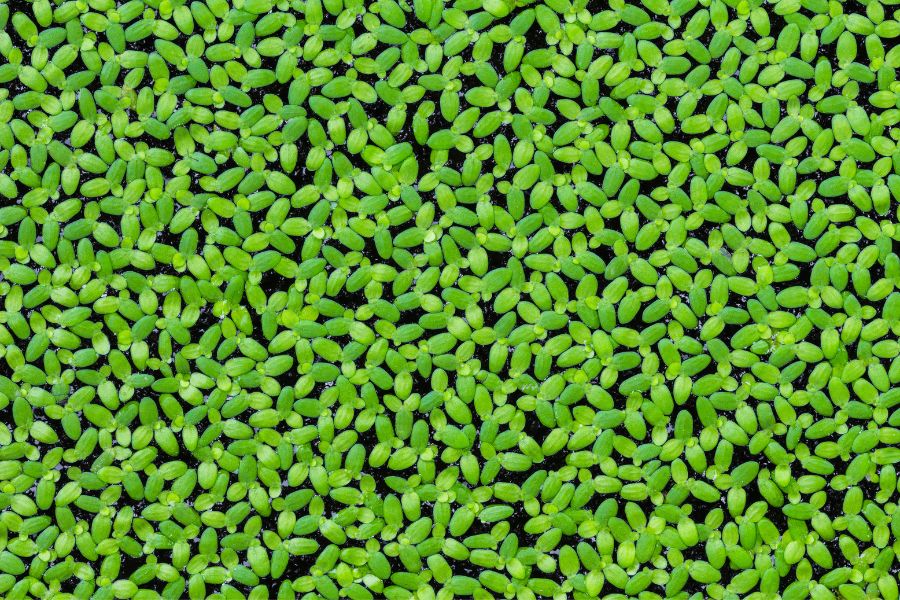All aquarium plants need light for photosynthesis. However, their light requirement varies per species. While most prefer moderate to intense lighting, there are aquarium plants that can survive in minimal light conditions.
Collectively known as low-light aquarium plants, these aquatic florae are perfect for simple and unsophisticated tanks that do not require the installation of costly lighting systems.
To compensate for their decreased photosynthetic activity due to minimal light, these plants feed from nutrients present in the water.
Among the low-light aquarium plants, they use either one of the nutrient-feeding modes.
Some low-light aquarium plants are root feeders. They absorb and take in nutrients through the roots. It means they depend on the number of nutrients found in the substrate. On the other hand, column feeders extract nutrients directly from the water via modified stems called rhizomes.
In this article, aside from discovering the different types of low-light aquarium plants, you will also learn their mode of nutrient feeding, and the categories based on their level of maintenance, height, and placement profile.
Source of Light
There are a variety of light sources for low-light aquarium plants.
Sunlight is the cheapest and most natural way of supplying your low-light aquarium plants with solar energy for photosynthesis. But we must think twice about using sunlight, especially since most aquariums are indoors. Technically, it is possible if there is a strategic location for your aquarium to get the most sunlight.
However, relying on sunlight as your only solar energy source has consequences. Aside from reduced photosynthetic activity in your plants, your waters can warm up.
Especially if you have a glass tank, sunlight magnifies when it hits the walls. Since it is a closed environment, the heat is trapped, causing your water temperature to rise.
Because algae love warm water, they start to flourish. It is why sun-lit aquariums are often overgrown with these unwanted plants.
On the other hand, most aquarists prefer artificial lighting. Commonly used before, and some up to now, are fluorescent and metal halides. But aside from emitting heat, it gives too much brightness and alters the gloomy preference of low-light aquarium plants.
Currently, LED lights are the preferred lighting system for low-light aquarium plants. While LEDs can still get hot, their heat emission is significantly low compared to the old lighting systems.
Aside from having a low heat signature, the wattage of LED lights is low, and you can choose the appropriate wattage for your aquarium as LEDs have a wide range of wattage selection.
How Low is Low-light?
All aquarium light products available today are sold under a specified wattage.
To have a low-light aquarium, you must have an artificial illumination not exceeding 1.5 watts per gallon of water.
Here’s a sample light requirement for different sizes of low-light aquariums.
| Size of tank | Light requirement |
| 10 gallons | Not exceeding 15 watts |
| 20 gallons | Not exceeding 30 watts |
| 50 gallons | Not exceeding 75 watts |
If you’re buying an aquarium that already comes with a lighting system, always check the water capacity and cross-check it with the wattage of the built-in lighting system.
Only consider a tank ideal for low-light aquarium plants if it matches our computation (as shown above). However, if it exceeds, expect your tank to become chaotic. Under intense brightness, low-light aquarium plants will have uncontrolled growth.
The Best Beginner Low-light Aquarium Plants
If you have just started in the aquarium hobby with a simple tank setup and have no or little experience, you can still add greenery by choosing any of the plants listed in this section.
These low-light aquarium plants only require simple lighting, easy to maintain, and are great for gaining plant care experience.
Anubias
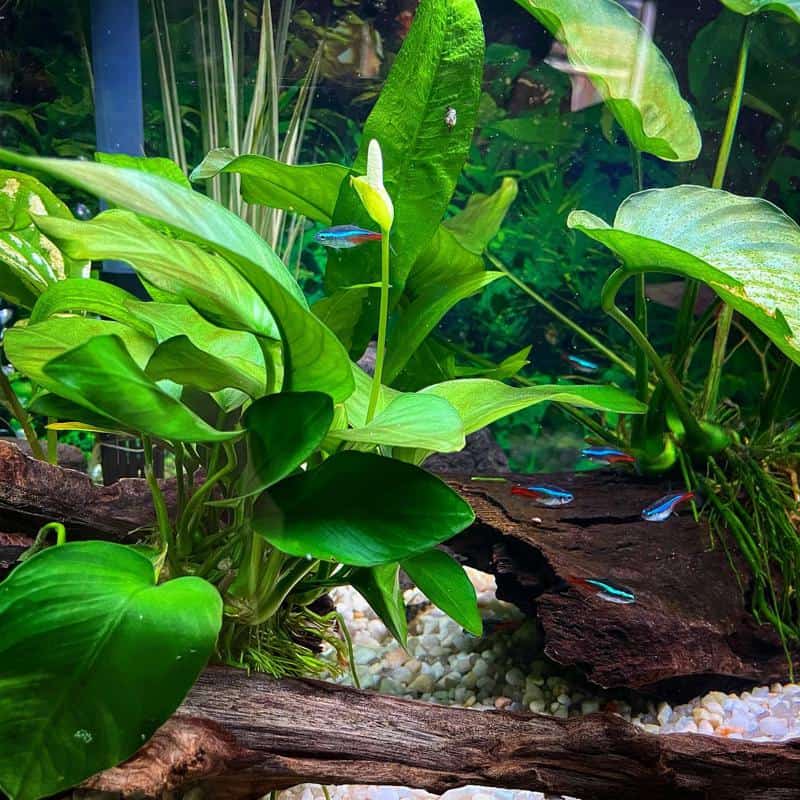
All Anubias plants are recommended for beginners since they can tolerate varying water conditions. But for a low-light environment, we only recommend two of their species: Anubias barteri and Anubias nana.
While they grow fast in intense lighting, their growth is slow in low light conditions and requires little maintenance on your part.
The only crucial part with Anubias you need to prepare beforehand is their substrate. Since they are root feeders, they require a thick substrate (at least 2 inches deep). Rather than sand, they prefer a gravel substrate that allows the fast spreading of their roots.
Brazilian Pennywort
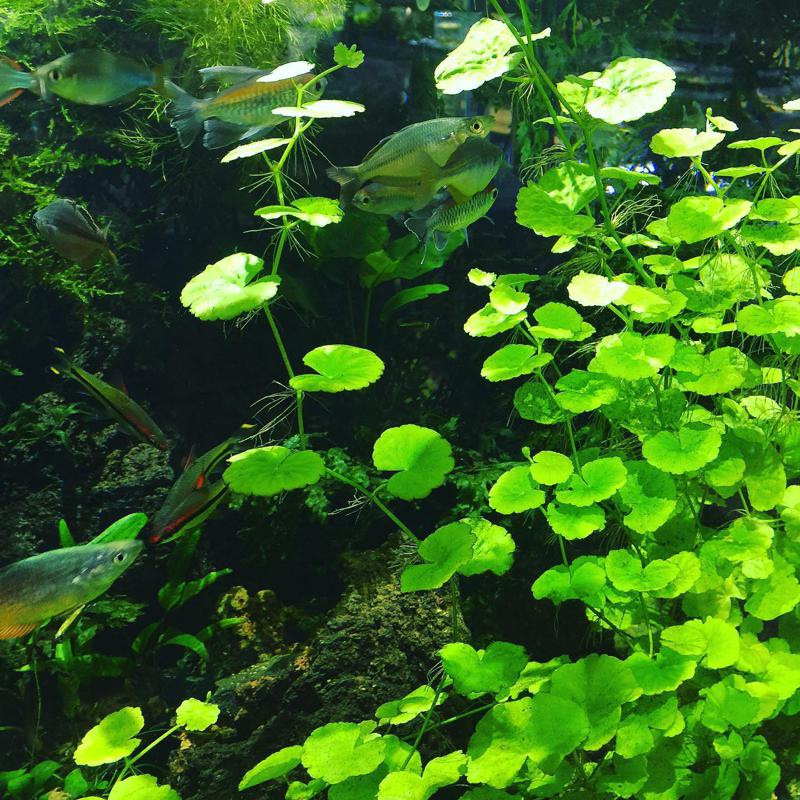
The Brazilian Pennywort (Hydrocotyle leucocephala) is one of the few versatile low-light aquarium plants suited for beginners.
Although its preference is warm water, it can tolerate slightly cold water. Consequently, while some plant them in the substrate, they are ideally set in driftwood to maximize its column-feeding traits.
With light variation, they can be grown in low-light environments and notice how slowly their vines creep or in brightly-lit tanks where they quickly grow and become dominant.
Guppy Grass
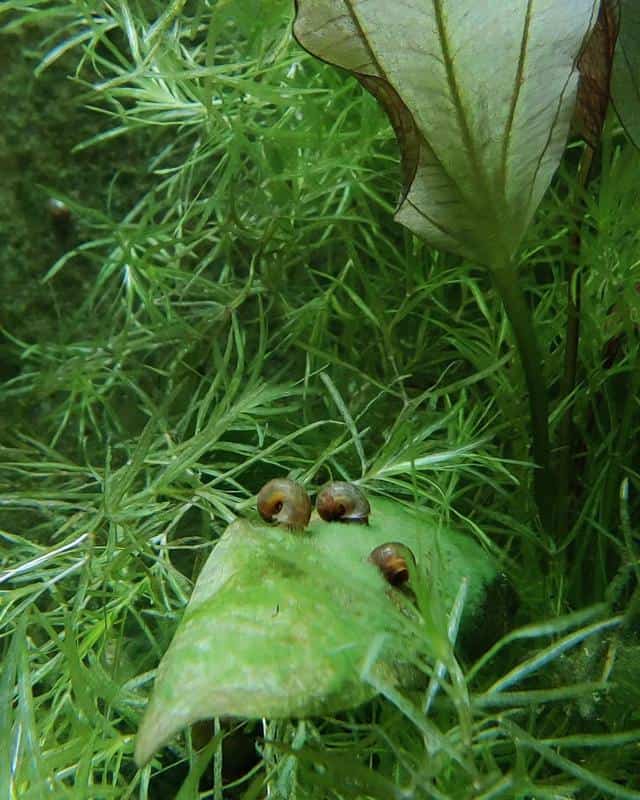
Are you looking for a low-light aquarium plant that goes well with shrimps?
Try the Guppy Grass (Najas guadalupensis).
Its fast-growing traits create two distinct zones needed for the shrimp. Above the plant, the low brightness from your lighting system creates a conducive area for shrimp feeding. After they eat, shrimps take a shady refuge below the plants or maze around their long and tangled stems.
Guppy Grass is colored green under bright-light conditions. But in low-light conditions, it turns to dark green which surprisingly, is their natural biological color.
Java Fern
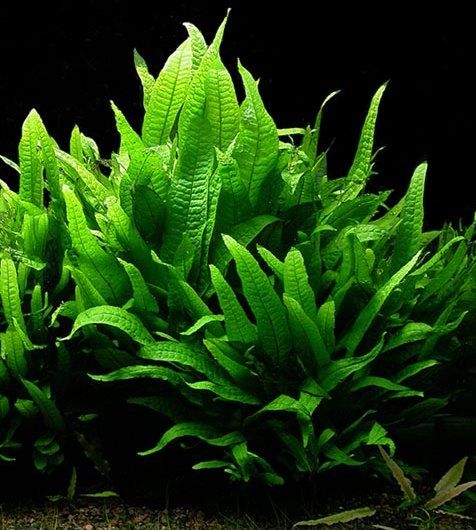
Java Ferns (Microsorum pteropus) is highly adaptive to any freshwater environment. Although planted in the substrate, they are better set in driftwood so their branching rhizomes can extend out for column feeding of nutrients.
They can grow in different light intensities, and their growth pattern changes with the amount of light present.
In a low-light environment, the leaves of Java Ferns spread out with bright green coloration. But if the light intensifies, their leaves will clump, and the color slowly shifts from bright to dark green.
Java Ferns can grow up to 12 inches in height, and you can easily see the underside of their leaves. Sometimes, you will see brown or black spores on their leaves’ undersurfaces.
Do not panic and mistakenly identify the spores as algae growth. Instead of panicking, you should be thankful as the spores are baby ferns you can use for replanting in other low-light aquariums.
Marimo Moss Balls
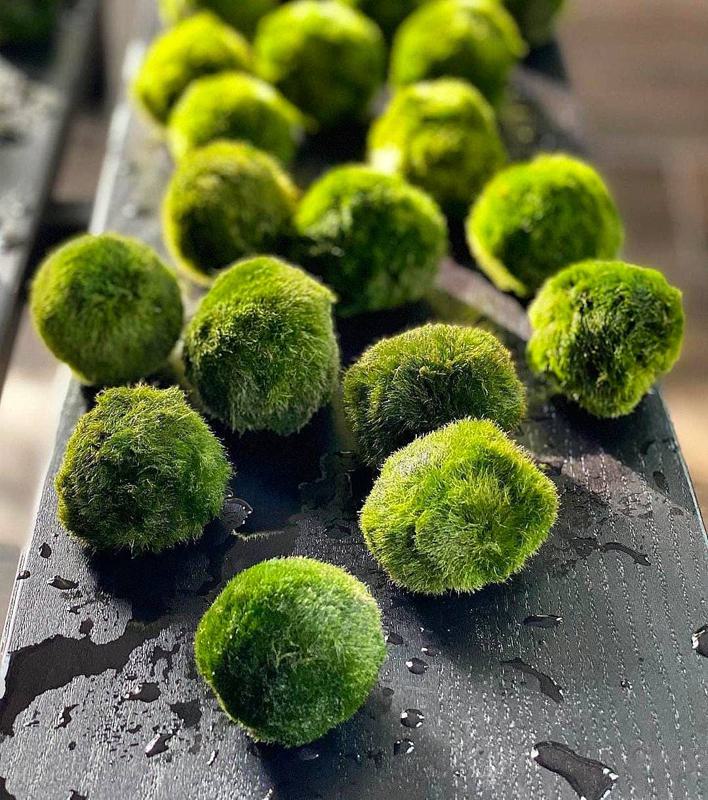
Given their true nature as algae, Marimo Moss Ball (Aegagrophila linnaei) is easy to maintain. Once they are in the aquarium, you just leave them behind, and don’t need any maintenance like trimming.
Marimo Moss Ball is also one of the few plants where lighting requirement is not a concern. Instead, aquarists are more concerned with water flow in dealing with Marimo Moss Balls. They need good water flow as they disintegrate their ball shape in stagnant waters.
Micro Crypt
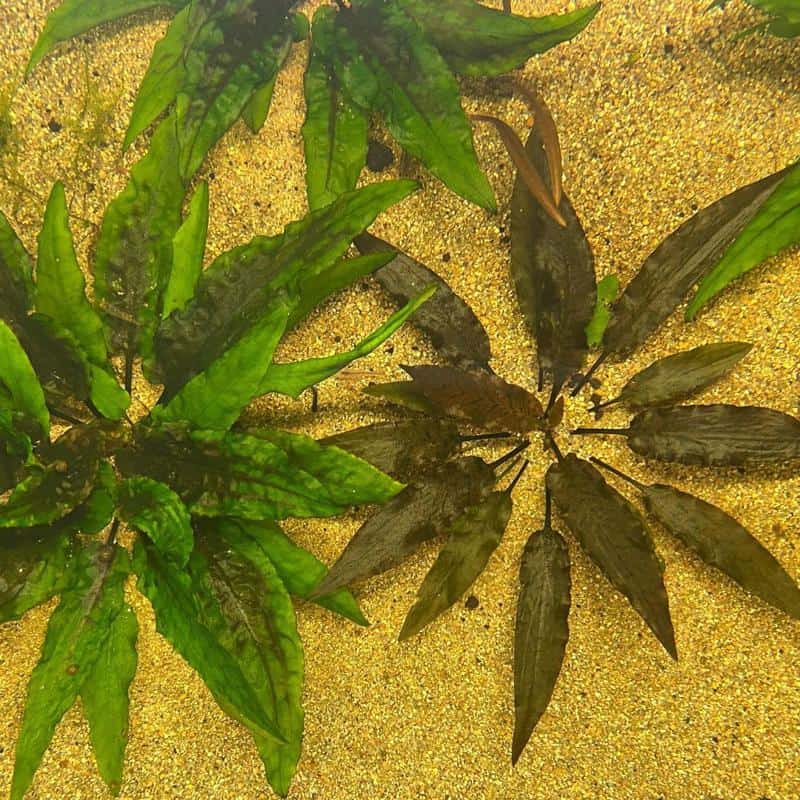
Micro Crypt (Cryptocoryne petchii) is a small ground plant that is easy to care for and only needs minimal light.
In low-light conditions, they only grow up to 6 inches tall. But be prepared to trim them as they grow fast in bright light.
Micro Crypts are root feeders. If you’re using gravel or any large-grain pebbles combined with a nutrient-rich substrate, its roots easily multiply and spread across your tank floor.
Moneywort
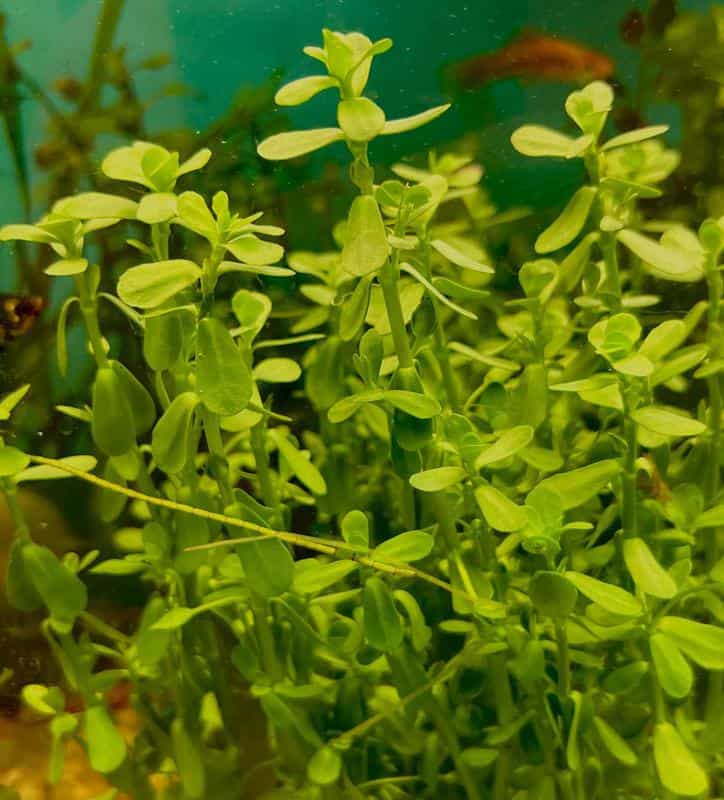
Regardless of light intensity, Bacopa monnieri or Moneywort is very easy to maintain, and it is usually left alone until it reaches the surface water.
Low-light conditions make Moneyworts grow slowly and may take months to reach surface water. Although they are column feeders, they are unique from other column-feeding plants. While their rhizomes are slowly growing and developing, their rounded green leaves become their main asset in absorbing nutrients directly into the water.
Beginners should be excited about the vertical growth of Moneywort. This plant allows you to practice your trimming skills as you are required to trim them once they reach the surface.
The Best Tall Low-Light Aquarium Plants
Not all tall aquarium plants require bright light for fast vertical growth. Some do well in low-light environments.
Although some are easy to care for, most tall aquarium plants require frequent maintenance like trimming and may not be ideal for beginners.
Note that some tall low-light aquarium plants may come across other categories (and vice versa for other plants). The species listed in this section are those plants with a vertical growth of 20 inches (50 cm) or more.
Amazon Sword
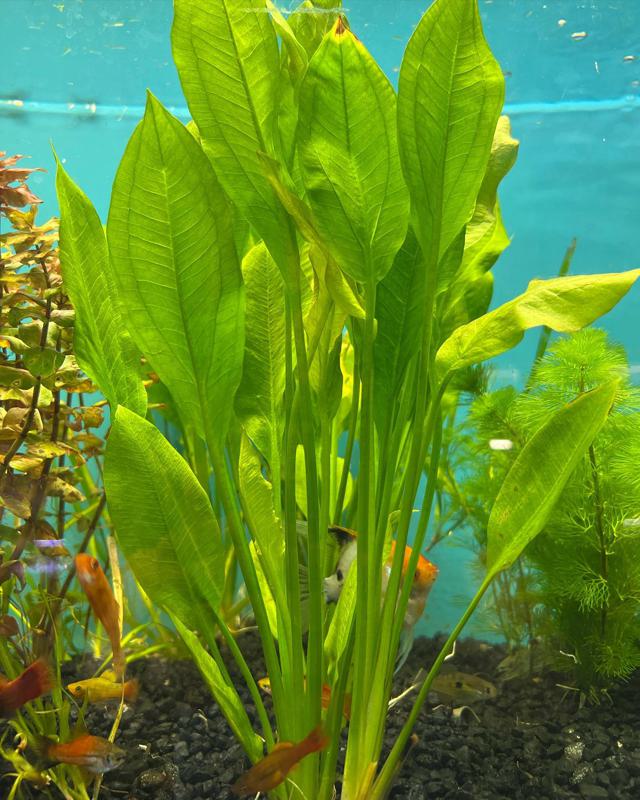
The Amazon Sword is a large and tall aquarium plant that towers above your tank substrate up to 50 cm high.
Although Amazon Swords prefer moderate lighting, two species adapt to a low-light aquarium: Echinodorus amazonicus and Echinodorus bleheri.
Amazon Swords are root feeders. They need a generous amount of substrate for their roots to spread and anchor themselves for firm vertical growth.
Instead of light, aquarists are more concerned about the amount of substrate nutrition since this plant requires a lot of nutrients to grow and survive.
In low-light conditions, Amazon Sword grows slowly. But exposing them daily to low light for 10 hours allows them continuous vertical growth.
African Water Fern
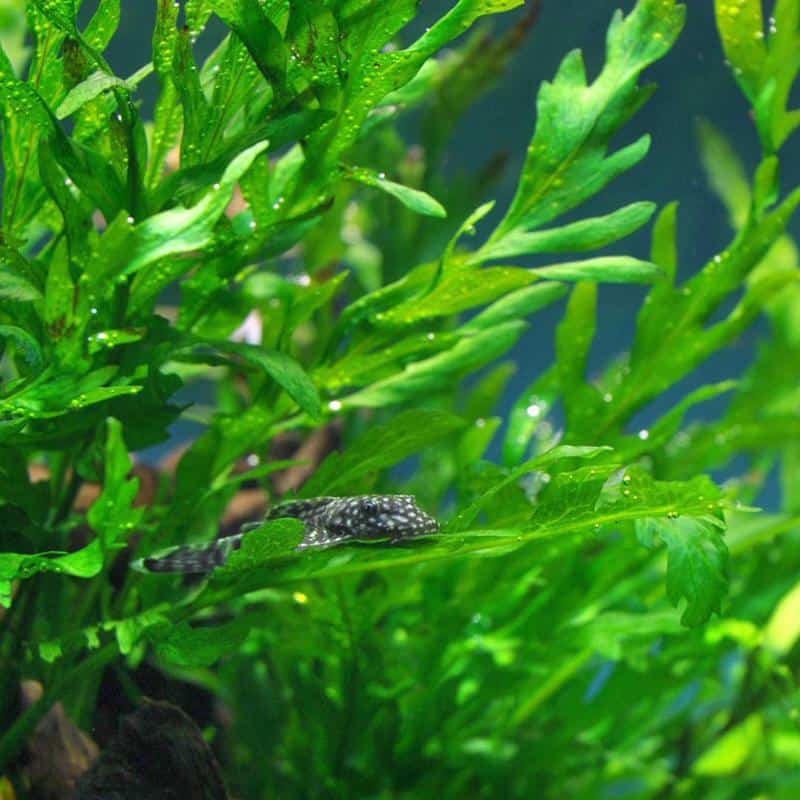
African Water Fern (Bolbitis heduelotii) is a tall plant reaching 22 inches (55 cm) above the substrate and is ideal for large tanks with a low lighting system.
Since their leaves are long and narrow, they give buoyancy to the plant. It is why you need to set them in driftwood which will also compensate for their column-feeding habits.
While African Water Ferns are easy to maintain, they grow slowly in low-light conditions and require warmer water ranging from 75 – 80 F ( 24 – 27 C).
American Waterweed
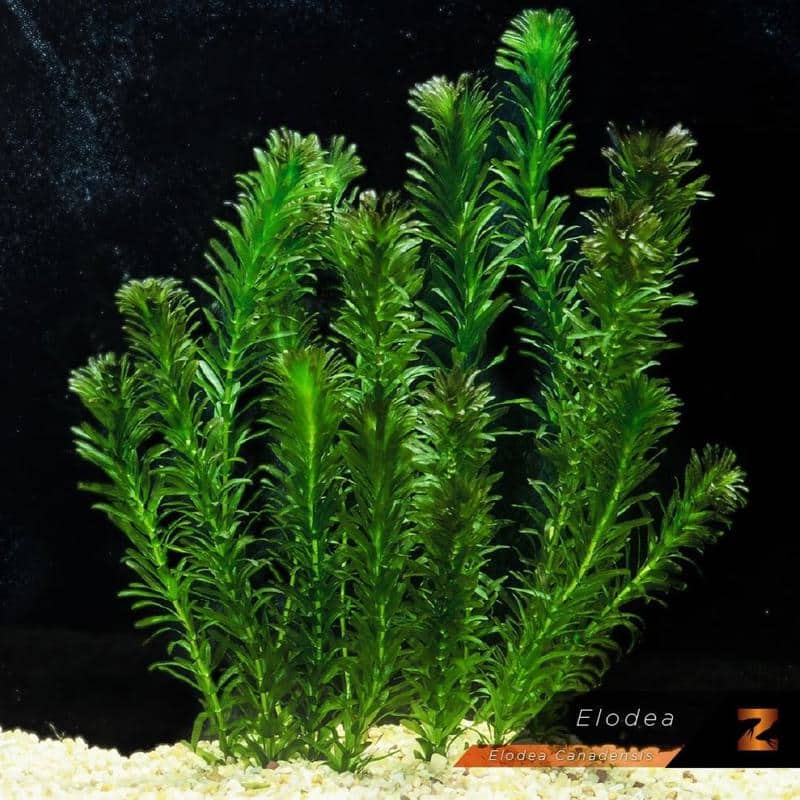
American waterweed (Elodea canadensis) is a common aquarium plant known for its ease of care and dense vegetation.
It can adapt to a variety of light conditions and can grow up to 30 inches (76 cm) tall, even in low light conditions.
When it grows, the stems of the American Waterweed project upward, with leaves densely branching out on the side. Their vertical growth helps them in their column-feeding habit, where they can absorb nutrients at any depth in your tank.
The dense vertical growth of the American Waterweed makes them ideal for a fry tank. You can see a lot of small fish, fry, and shrimp mazing around their thick vegetation.
Dwarf Rotala
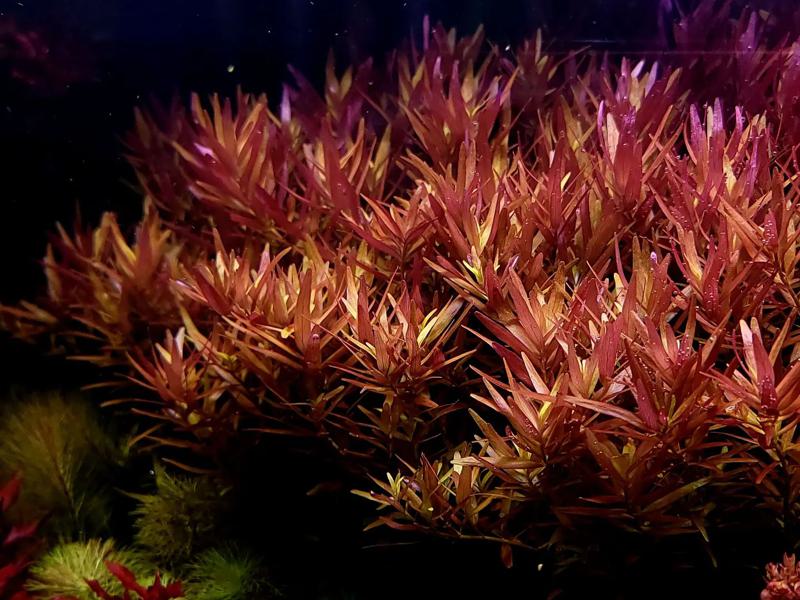
The Dwarf Rotala (Rotala rotundifolia) is recommended only for experienced aquarists since they are grown with a combination of low-light environments and low nitrate concentration.
This column-feeding plant grows up to 31 inches (80 cm) tall and its sturdy stems and needle-like leaves are pointing toward the surface most of the time.
Another care required for Dwarf Rotala is not just constant trimming, but you need to cut some parts of the top section as the lower section of this plant is easily affected by its dense top vegetation.
Crypt Spiralis
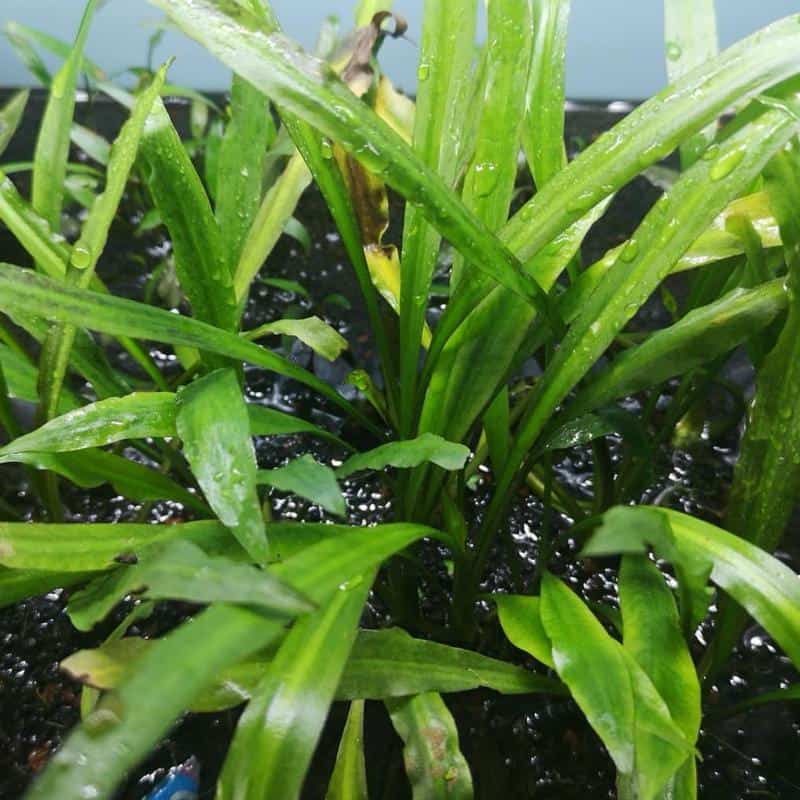
Most tall aquarium plants have short leaves, but not the leaves of Crypt Spiralis (Cryptocoryne spiralis). Looking like grass, each of their leaves is narrow and long that can reach 20 inches (50cm) in height.
Although they are commonly kept in moderate light, Crypt Spiralis grows best in low-light conditions. Much of their nutrition is absorbed in their roots and they do require an iron-rich substrate.
For aesthetics, Crypt Spiralis can become your centerpiece and we recommend you plant them in solitary or clump in a few plants together.
Green Hygro
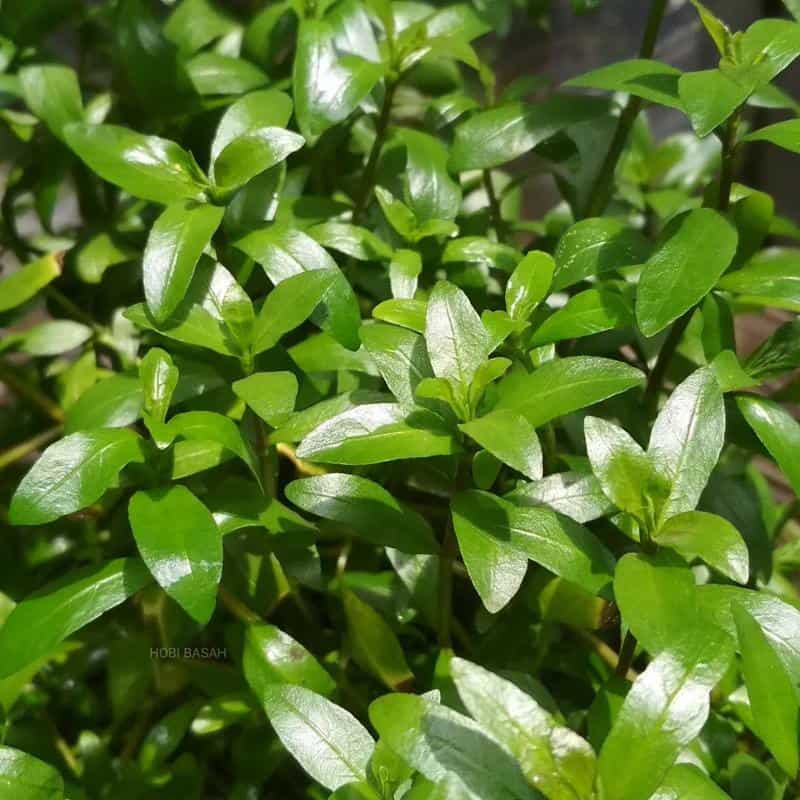
Considered one of the fast-growing aquarium plants, the Green Hygro (Hygrophila polysperma) requires constant trimming. Otherwise, if you leave them behind, they can grow up to 20 inches (50 cm) tall.
With its vertical stem growth and alternating sword-like leaves, the Green Hygro will give you the impression that it is a column-feeding plant. Yes, they absorb nutrients directly from the water but also use their roots for nutrient feeding.
It is why they grow so fast even in low-light conditions. And don’t be surprised if you see new shoots just days after trimming, as pruning induces them to grow more.
Hornwort
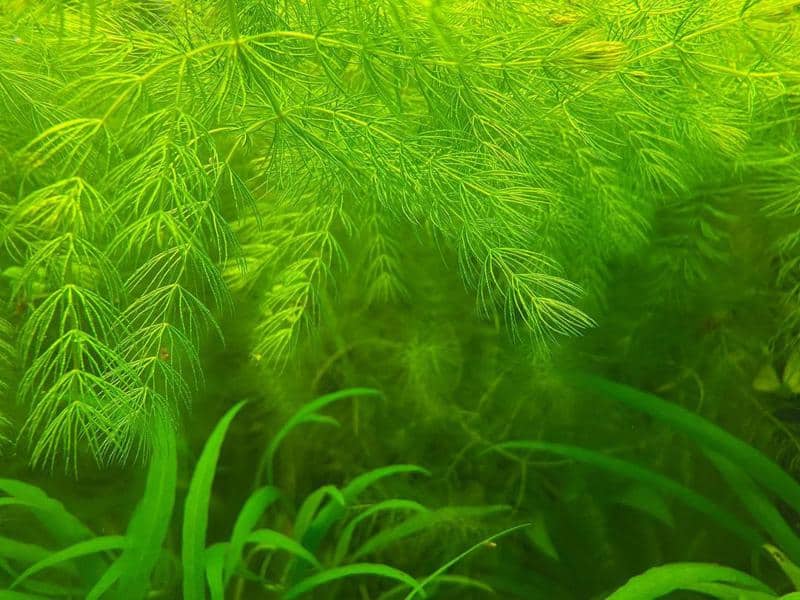
The Hornwort (Ceratophylum demersum) is one of the tallest aquarium plants and its recorded maximum height reached 10 feet long.
This plant is only recommended for large aquariums. If you’re using intense artificial light, then this plant will leave up to its reputation and requires constant trimming. However, the speed of their growth can be controlled by using a low-lighting system.
When you are keeping a Hornwort, you can expect their dominance in the tank and other aquarium plants may not survive with their presence.
There are two reasons why Hornworts will overwhelm your tank. First, they simultaneously grow vertically with their stems and leaves racing towards the surface, and horizontally where a single plant sends out multiple stems on the side. Second, they release a chemical that deters the growth of other aquarium plants.
Water Wisteria
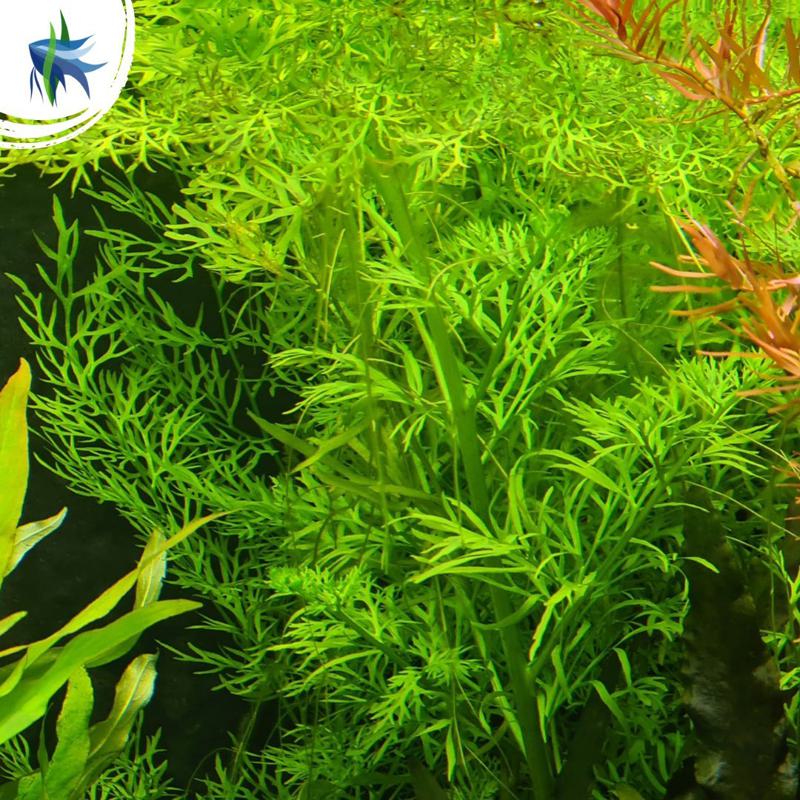
If you wish to have a tall and feathery aesthetic in your tank that is lit up only with a low-lighting system, then go for the Water Wisteria (Hygrophila difformis).
While they have almost the same characteristics as their close cousin (the Green Hygro), the Water Wisteria is unique since the appearance of their leaves will depend on the intensity of the light present.
In low-light conditions, the leaves will only appear to be bare and smooth. It is only when they are subjected to intense lighting that their leaves will exhibit a feathery appearance.
The Best Low-light Aquarium Carpet Plants
As their name suggests, carpet plants have a blanket-like growth and may partially or completely cover up your substrate. Since they are naturally adapted to occupy the bottom part of the tank, they only require a low-lighting system.
Creeping Staurogyne
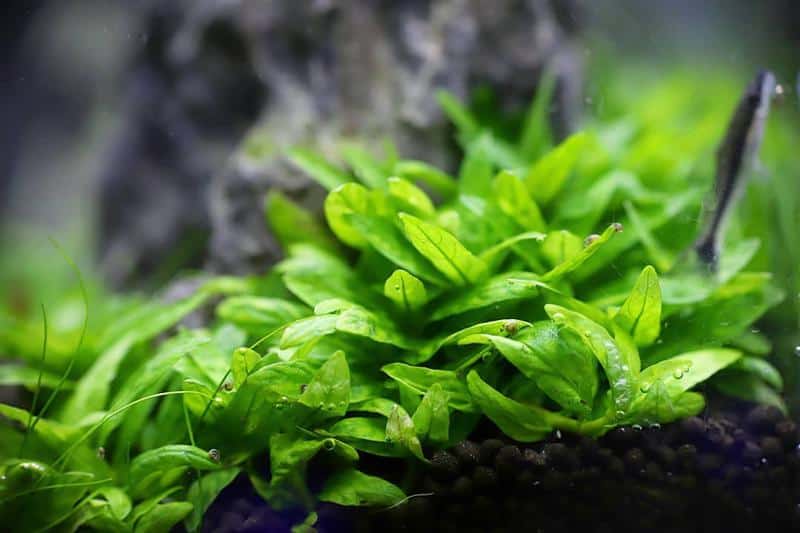
The Creeping Staurogyne (Staurogyne repens) is aesthetically pleasing since their small leaves are arranged in a compact setting creating a low bushy appearance.
This plant is a root feeder and they have a big appetite for substrate nutrients. In low-light conditions, the Creeping Staurogyne will just form a small mound of bushy vegetation.
But if you add a little CO2, you will have rapid horizontal growth and may start carpeting in a few days.
Dwarf Sagittaria
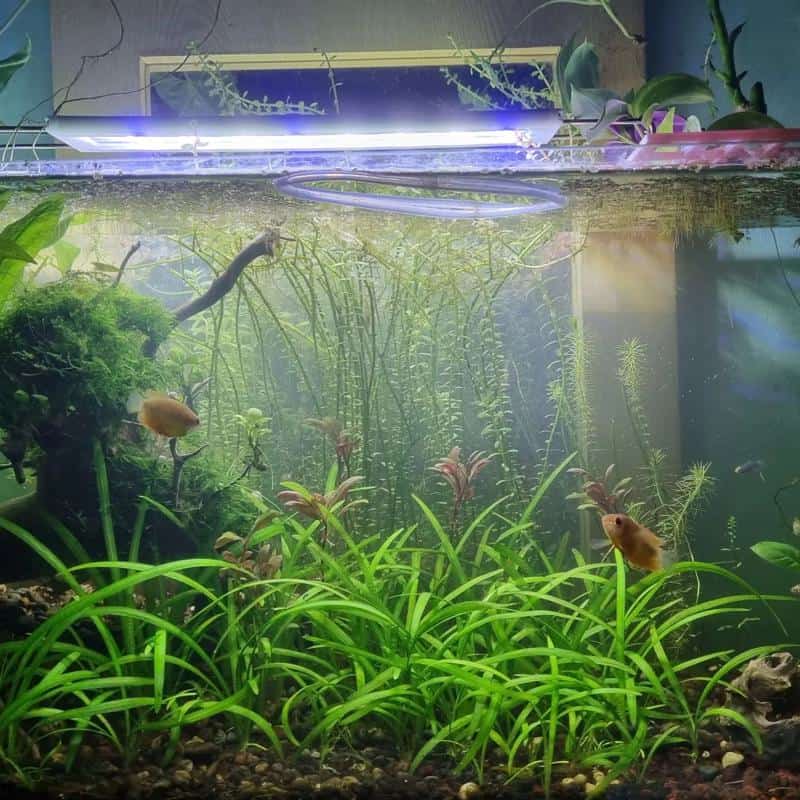
If you’re looking for a low-light carpet plant that will not densely cover and leave an irregular spacing for substrate exposure, then you must plant the Dwarf Sagittaria (Sagittaria subulata).
This plant is commonly used especially in a newly set-up tank since it can withstand unstable water conditions, including the use of low-lighting systems.
With trimming, the Dwarf Sagittaria is one of the preferred foreground plants. But they can also be used as a background plant since their leaves can grow up to 12 inches (30 cm).
Java Moss
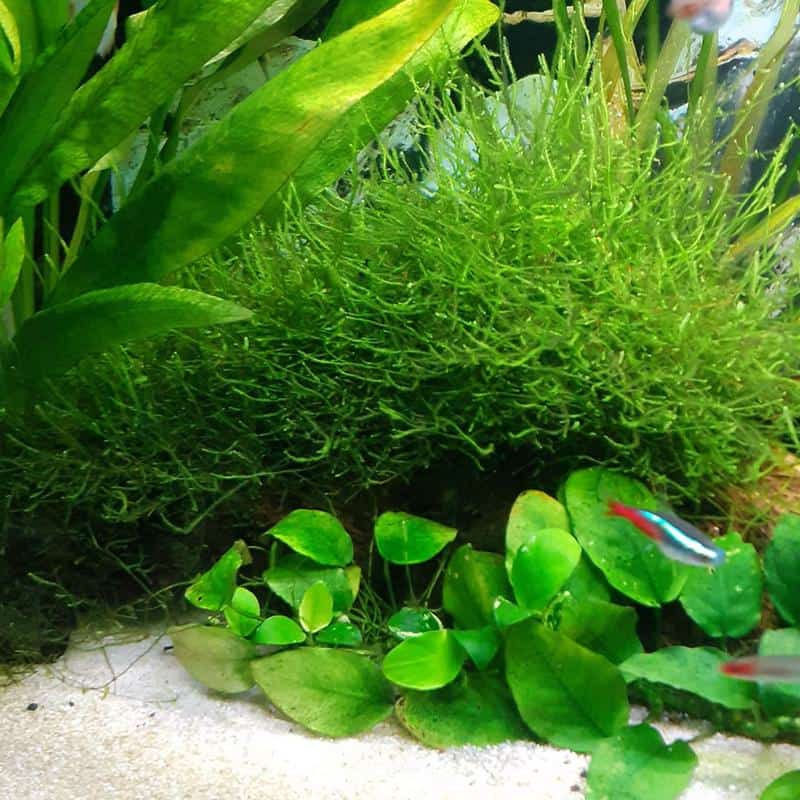
The Java Moss (Vesicularia dubyana) truly defines the word “undemanding” and are best buddies with newbie aquarists.
This plant only needs to be set at the bottom of the tank, and in no time, you will see their rhizomes are already attached to gravel or driftwood.
Aside from being one of the few column-feeding carpet plants, the Java Moss can tolerate a range of water temperatures and light intensities, including low-light environments.
You will also have no problem thinking about what types of fish to keep with them as they are compatible with all freshwater aquarium fish and small critters like shrimps.
Just be aware that as they carpet along the substrate, their fine fern-like leaves trap debris, and the cleaning time can become demanding.
Pelia Moss
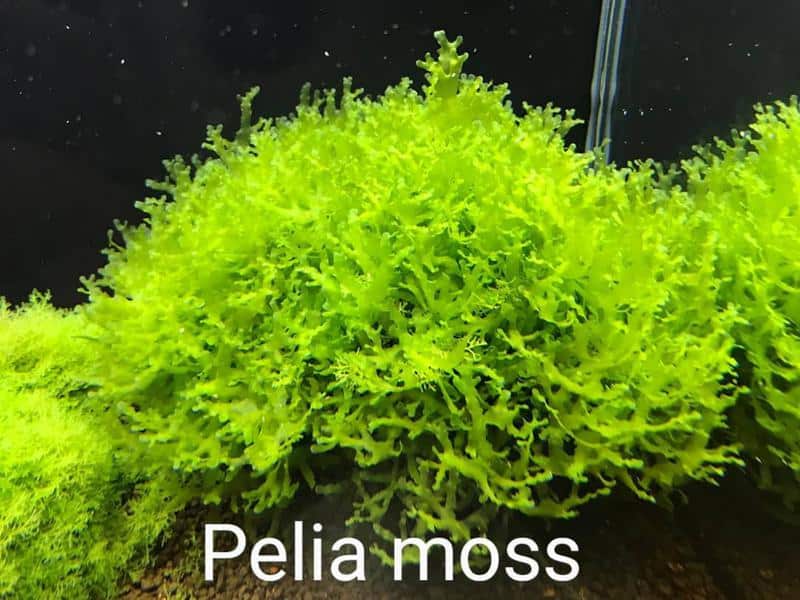
Carpet plants are not just about covering the substrate. They can also be used to create a secondary layer of carpet, like in the case of the Pelia Moss (Monosolenium tenerum).
This means that you can plant them along with other species of low-light carpet plants. In the case of the Pelia Moss, they initially grow into a bushy appearance and slowly spread horizontally over time.
To achieve a secondary layer of carpet, you need to plant the Pelia Moss in batches with a couple of days intervals between batches.
Pygmy Chain Sword
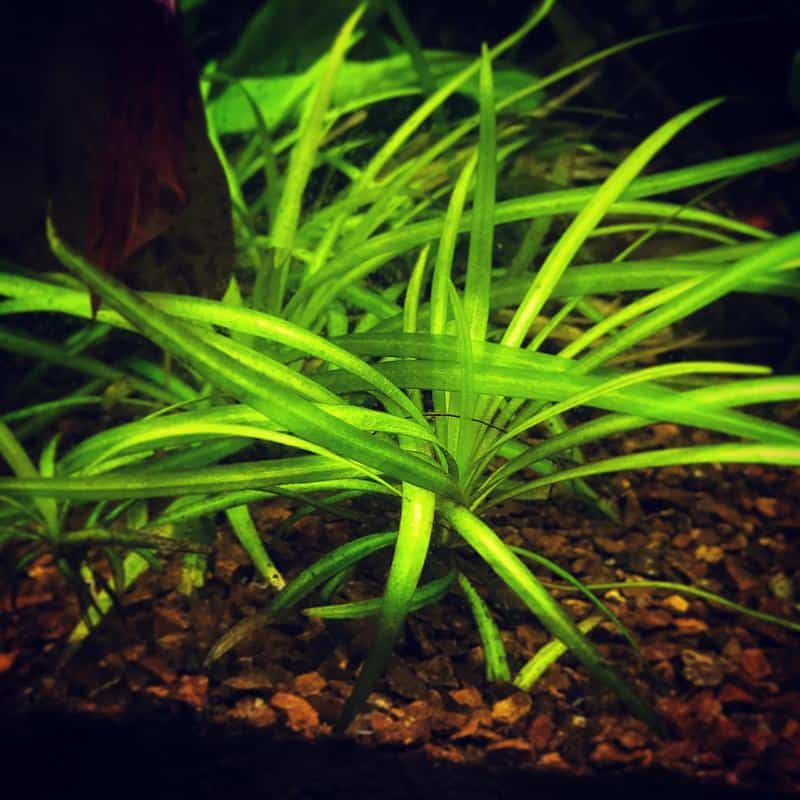
The Pygmy Chain Sword (Echinodorus tenellus) is a versatile carpet plant in many ways.
Aside from tolerating a range of light intensities (including low-light environments), you can choose how you like to plant them and where to place them. They can be fully submerged in the aquarium or partially dipped in a paludarium.
The Best Low-light Floating Aquarium Plants
With their position at the surface, floating plants get the most light. But not all floating plants prefer intense light exposure, as some favor low light.
Amazon Frogbit
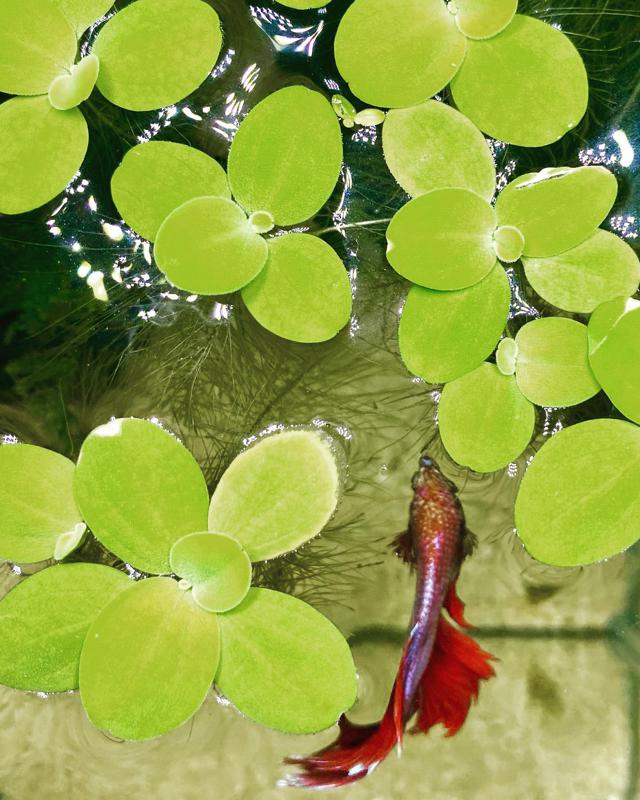
The Amazon Frogbit (Limnobium laevigatum) hates intense lighting as it can burn its leaves.
Ideally, the Amazon Frogbit requires moderate lighting. In a low-light environment, the plant can become unhealthy and stop growing. But there are tricks to keep them healthy.
You can either do an extended low-light exposure of up to 10 hours a day or add liquid fertilizers for improved nutrient feeding.
Duckweed
Commonly used in growing floating plants are full-spectrum lights. If you don’t have it or have a less intense lighting system, then Duckweeds are the right floating plant for your tank.
While this floating plant is undemanding and grows without too much care, we still advise you to add nutrient supplements for them to flourish and glow its green vibrancy.
Dwarf Water Lettuce
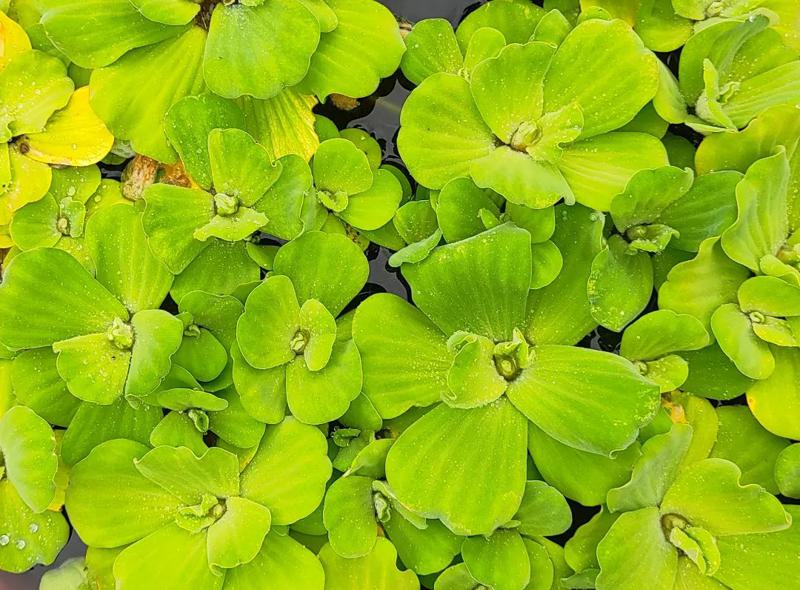
Have you ever wondered why the burning of leaves is common in Dwarf Water Lettuce (Pistia statiotes)?
It is due to intense lighting where their cabbage-like leaves can dry and warm up in intense lighting.
If you talk to an expert aquarist, they will always recommend a shady or a low-light environment for keeping Dwarf Water Lettuce. Although a full-spectrum light is still recommended, we recommended you choose a lower wattage.
Waterwheel Plant
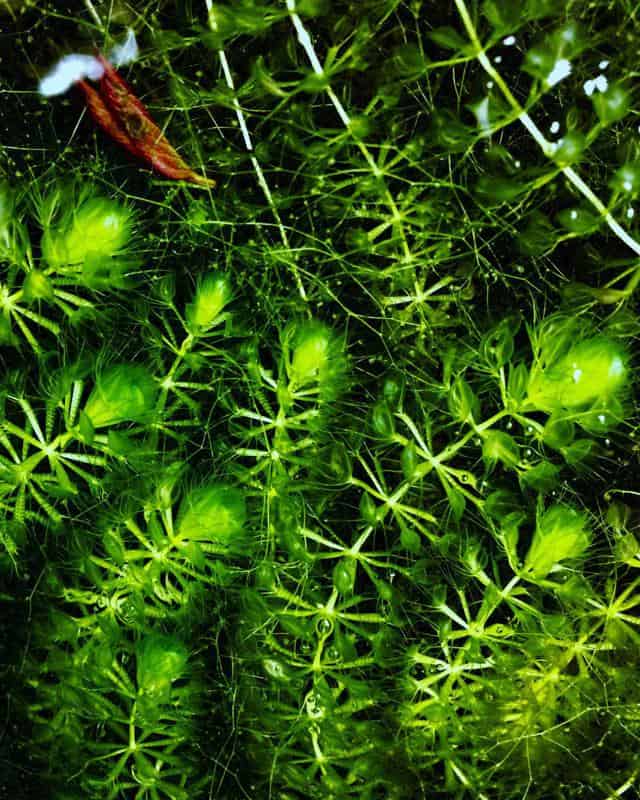
Is it possible to have a low-light floating plant that is also a carnivore?
Well, we just described the Waterwheel Plant (Aldrovanda vesiculosa). Do not worry if they are carnivorous since they will not eat your fish. Instead, they feed on microorganisms like plankton.
Being a carnivore, the Waterwheel Plant does not rely solely on photosynthesis for growth which is why it can thrive in low-light environments.
But being a carnivore also has its downside. Your tank water should be rich in microorganisms. Otherwise, they will not grow properly and die eventually.
Also Read:
- Best Aquarium Plants for a Sandy Substrate
- Best Aquarium Plants with Flowers
- How Long Should My Aquarium Light Be On?
Acclimation for Low light Aquarium Plants
By this time, you may have your pick on which aquarium plant to choose for your low-light aquarium. But it doesn’t mean you can purchase them and directly place them in your tank.
Check for Pest
Whether you purchased it online or at a pet shop, always check your plants for pests, such as worms and snails. They are small and will usually hitch a ride.
Take away any pests before introducing your plant to its new home.
Selective Pruning and Grouping
Never plant a new aquarium plant with rotting leaves or roots. Trim any rotting plant part or showing signs of illness, like browned or yellowed leaves.
The quality of the plant you will place in your tank should be vibrant in color.
After trimming, you can now group them according to your desire. You can plant them in solitary or clump them in small groups.
Proper Placement
Once trimmed and grouped, you can place your aquarium plants in the tank.
For a new tank, we suggest you plant them first before adding the water (except for floating plants).
Placement is crucial for plant acclimation. Plant them based on their substrate requirement (floating, rooted, or attached to a rock or driftwood).
Correct placement is essential. We do not recommend moving your aquarium plants after planting. Once planted, this is the time that will adjust to its new environment, and relocating them to a new place causes plant stress.
Light Adjustment
It is safe to assume that your purchased aquarium plants have already adjusted to moderate or intense lighting. The challenge now is transitioning from mid or high-light to a low-light aquarium.
Upon stocking, place your plants directly under your lighting system. My secret is to put them initially at the surface and leave them for a few hours. Over time, submerge them deeper and deeper until they reach their preferred habitat.
In this way, you are slowly distancing away your plant from the intense lighting they once adjusted.
FAQs
Can Aquarium Plants Grow with Just Led Lights?
Yes. A regular white LED light already has the color spectrum required for aquarium plant growth. For plants that demand a specific color spectrum, you can use colored LEDs with red, green, and blue light.
But again, it boils down to wattage. High-wattage LED lights emit intense brightness, defeating the purpose of having a low-light aquarium.
Will Algae Grow Under Led Lights?
Yes. Surprisingly algae grow better with LEDs, especially in a closed environment (like an aquarium).
Do Low Light Aquarium Plants Need Co2?
No. In a low-light environment, the metabolism of aquarium plants is slow. The CO2 from fish and other inhabitants is enough for their needs.
However, it would be a different scenario when you have a lot of aquarium plants, and relying solely on fish CO2 is not enough.
How Many Hours of Light Do Aquarium Plants Need?
Prolonged exposure compensates for the low-light intensity of aquarium plants. We recommend a daily exposure from 8 to 10 hours for low-light aquarium plants.
Conclusion
Taking care of low-light aquarium plants equates to using basic and unsophisticated tank set-up. It means that you will not be investing so much in new products that we are easily attracted to with their marketing campaigns.
Finally, it is without a doubt that most aquarium plants will do and perform well with intense lighting. That is their nature, and we can do nothing about it.
However, we can use this to our advantage. Exposing your aquarium plants initially to intense light will give you the desired growth rate and aesthetic beauty.
But when you reach your desired output, you can now shift to a low-lighting system to slow down their growth while sustaining the aesthetic beauty they have just displayed in an intense lighting environment.
